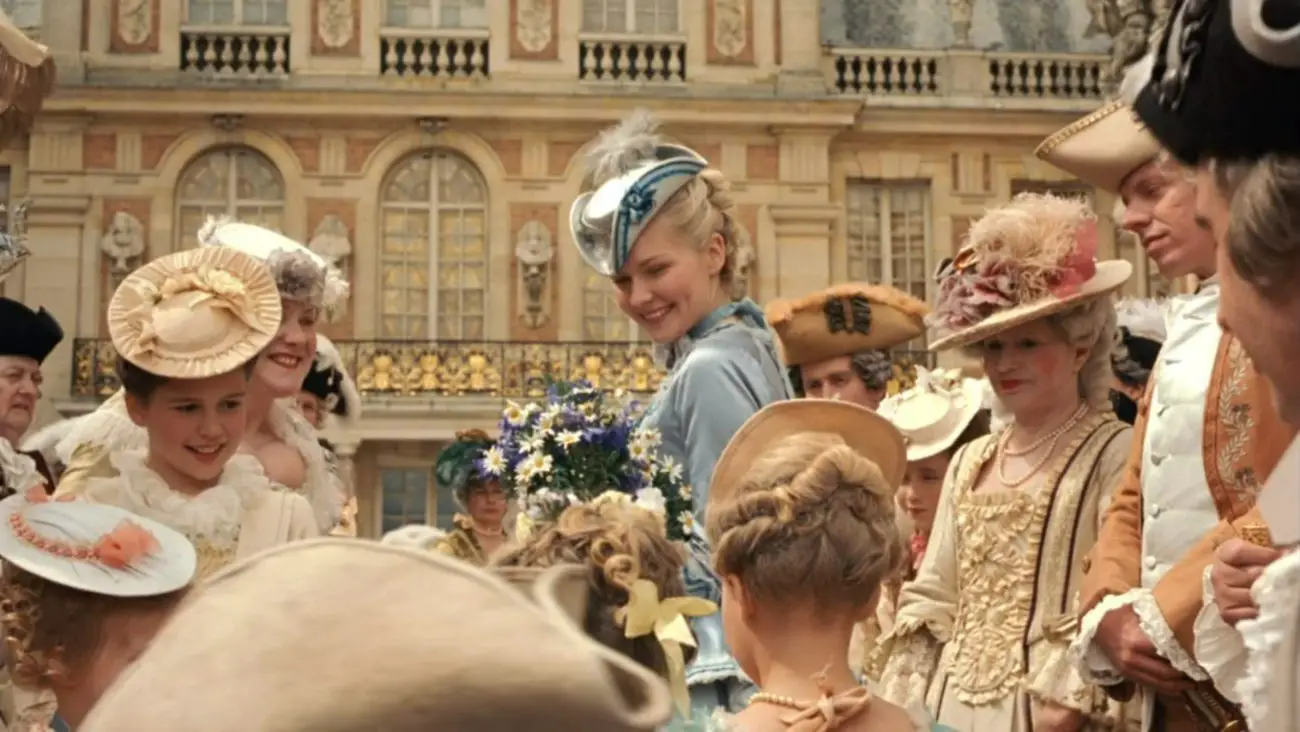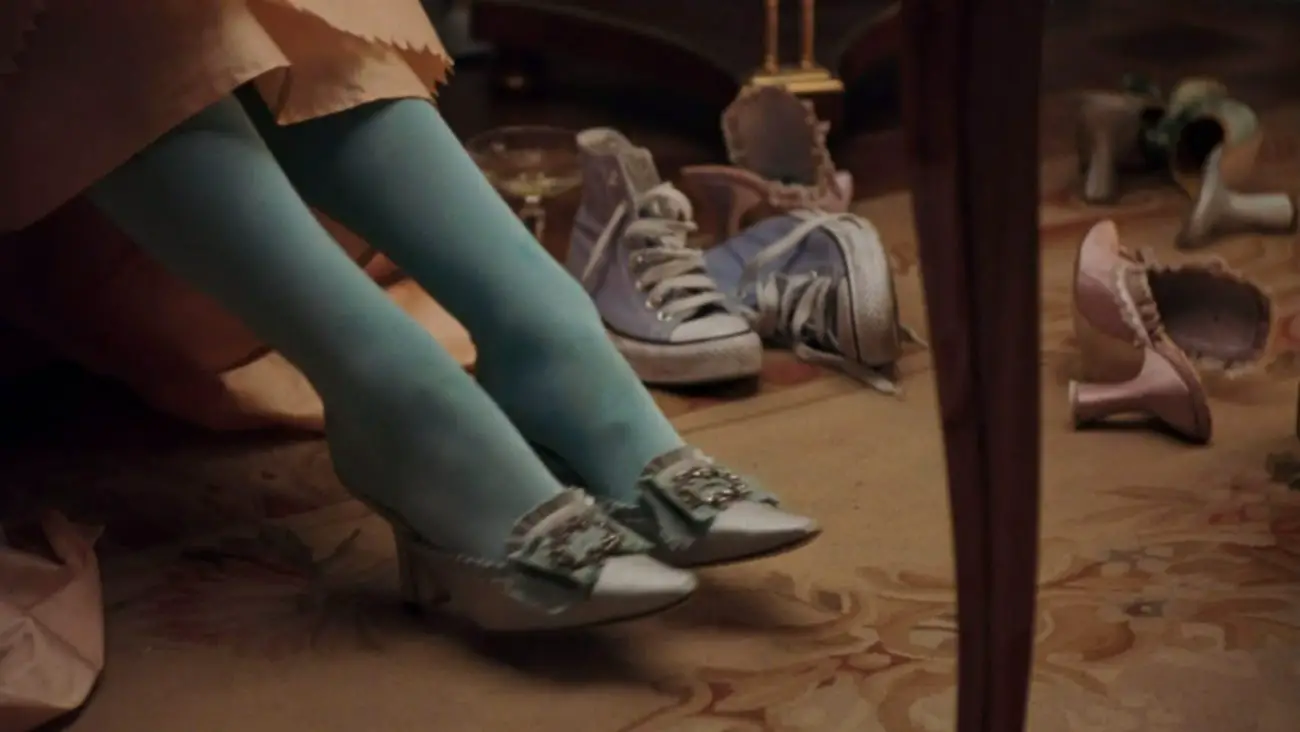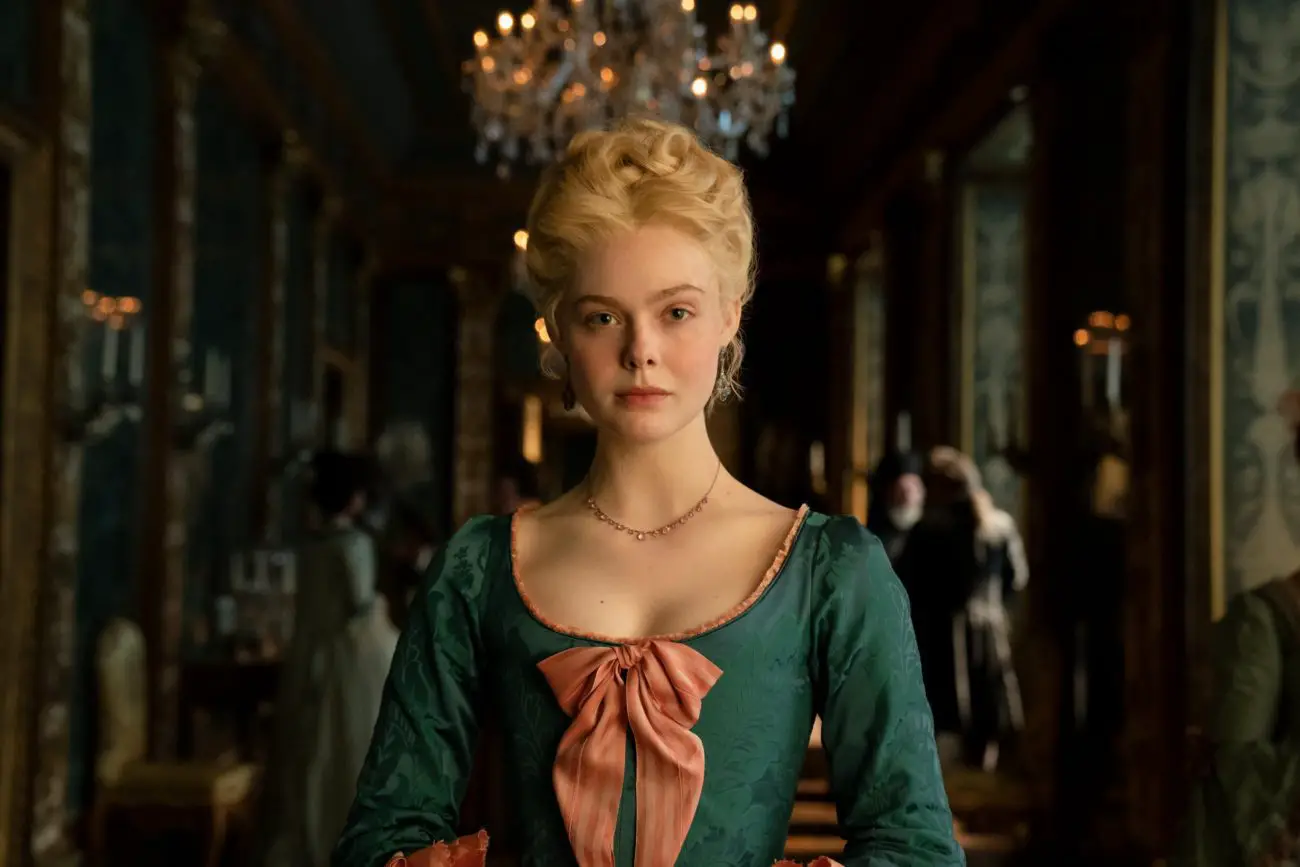In the early aughts, Sofia Coppola was the talk of Hollywood for her lo-fi, indie-feel 2003 quasi-romance Lost in Translation, a surprise box-office smash and Academy Award-winner (for Best Original Screenplay) and four-time nominee, including Coppola becoming only the third woman ever nominated for Best Director at the time. With her festival hit earning $118 million in box office—and on a miniscule four-million-dollar budget at that—Coppola had followed her promising Virgin Suicides debut with a film seeming to herald the arrival of a new feminist auteur for the 21st century; a director with an idiosyncratic, if immediately recognizable, and visually and sonically intriguing cinematic style. But with her 2006 follow-up, Marie Antoinette, the knives came out.
Already some critical pushback began to poke at Lost in Translation, a film whose reputation, largely diminished steadily over time, with claims of its implicit racism and imperialist orientalism growing louder and more frequent. For her follow up, Coppola produced a historical romance, based on the life of Marie Antoinette Josèphe Jeanne, the Archduchess of Austria who became Queen of France in the years immediately prior to the French Revolution. Where Lost in Translation was set in present-day Tokyo and shot in a distinctively languid, lo-fi style, Marie Antoinette would tackle a time period more than two centuries past and with a much livelier pace and tone.

It’s almost as if Coppola had set out to make a film that would be anything but Lost in Translation. The former featured at its core a beguiling cross-generational friendship set against the ennui of postmodern isolation; the latter told the story of one woman’s ascent to the throne as complicated by sex, reproduction, partying, war—and candy. The young queen, unaccustomed to the court of Versailles and perplexed by her distant new husband Louis Auguste XVI, finds solace in parties and fineries until the demands of running a country press upon her and her husband.
For a historical drama, Marie Antoinette made reasonable box office: nowhere near the runaway success of Lost in Translation, but a modest gross of $60 million on its budget of $40 million (its costs including location shooting at the Palace of Versailles and what must have been significant expenditures on wardrobe, makeup, and pastries, from footwear by Manolo Blahnik to macaroons by Ladurée). The critical response to the film was less than kind. James Bernardelli called it “odd, irritating, and tedious…, a movie that never gets to the point, perhaps because it doesn’t recognize what the point is.” Meanwhile, others assailed the film for its less-than-strict obeisance to historical fact, its focus on court intrigue at the expense of revolutionary affairs, and especially for its willfully anachronistic tone.
That last is worth some mention. What Coppola was doing in 2006 was nearly unprecedented, but in retrospect makes all kinds of sense. At the time, a viewer’s sense of what historical drama might do was probably influenced better fulfilled by the staid reverence of the same year’s The Queen. A historical drama might take some creative license, but primarily in the cause of narrative expedience. Coppola, on the other hand, virtually ignores the broad historical and political contexts of the French Revolution to focus on the funny, affecting, feminist tale of a woman who we all know will ultimately meet her gruesome fate by beheading. In doing so, she concocts a dazzling, intricate, complex world-within-a-world of Versailles focused on femininity, vanity, and friendship—and then places those very human traits at the center of the film’s narrative.

It was in the aughts something of an open season on young female celebrities. Paris Hilton and Jessica Simpson, testing out the reality-show waters gaining traction on cable channels, became fodder for late-night hosts’ monologues. Laguna Beach and the like were popular targets of “hate-watching” and films about teen girls or young adult women were largely contained to unserious comedies, while the Christopher Nolans and David Finchers of the world kept things dark and tangled for “serious” (and predominantly male) audiences. It’s a battle that Coppola has always had to fight with her films: the notion that studying the alienation of a young woman in a patriarchal culture was somehow a mark of a casual, unstudied, privileged dilettantism.
Intentional Anachronism
Marie Antoinette, from its opening salvo of Gang of Four to its unlikely young female protagonist to its richly cinematic (and yes, anachronistic!) excesses, aimed to revisit the young Queen’s conventional history with a sympathetic lens. Coppola worked from Antonia Fraser’s feminist biography rather than more conventional ones like Stefan Zweig’s, hewing to the basic facts of the matter: the arranged and long-sexless marriage, the extramarital affair, the exorbitant partying, the eventual loss of public faith, and the rising tide of revolution. But within that framework, Coppola focused more on her protagonist’s feelings and sentiments—a craving for sweets set to Bow Wow Wow or a Jamie-Dorman-on-horseback fantasy, for instance—than the sweeping contexts of known historical fact.
The film’s postpunk-grunge soundtrack amplified Coppola’s visuals throughout, perhaps nowhere near so perfectly as in the party montage set to the Bow Wow Wow hit remake of “I Want Candy,” a song that might seem on the surface only to channel the accompanying visuals’ fetishization of cakes and confections but also presages Marie’s lust for Dornan’s Axel Von Fersen, long rumored to have been the Queen’s lover: “I know a guy who’s tough but sweet / He’s so fine, he can’t be beat / He’s got everything that I desire / He sets the summer sun on fire.” Not only did the soundtrack rile, so too did its visuals, which included a pair of 20th-century Converse Chuck Taylor All-Star lace-up hightops among the flotsam of fashion in the queen’s Versailles dressing room. It’s a brief moment but a telling one: to hell, Coppola was saying, with historical fidelity.

The scene—staged as Marie and her ladies-in-waiting prepare for a grande fête that evening—presses pause on the narrative. It’s a scene that is at once wholly incidental to the film’s narrative and absolutely integral to its spectacle. The camera pans across dozens of designer high-heels, intricately embroidered fans, and tantalizingly gorgeous fabrics: the women tap their heels as if the 1982 cover of a 1968 hit were audible in 1775! Champagne pops and spills, the girls gush and nosh, each Bo-Diddley beat rhythmically punctuating the montage sequence’s fast-paced cuts.
Speaking of cuts, there are well over 100 in this two-and-a-half-minute-long sequence, clocking in at an average shot length of about 1.6, way quicker than the film’s overall ASL of 5.4. (Coppola’s languid follow-up, Somewhere, would take its pace in the other direction with an astonishingly long ASL of 15.5 and at least three separate long takes each over 90 seconds.) The rhythmic cross-cuts are accompanied by sweeping pans, match cuts, extreme close-ups, and unusual angles, the scene as a whole adopting the language of the MTV music video and its attendance implications of unfettered consumerism. Only as the scene reaches its modest narrative conclusion, with Antoinette’s ridiculous party up-do signifying the extravagances of a Queen who knows nothing of life outside Versailles, does that frenzied pace abate. That Versailles itself served as the location for this study in opulence lends a degree of verisimilitude to the otherwise chaotic anachronisms.
There is something else afoot (pardon): the scene celebrates the Queen’s unabashed fetish for fashion in a way that empowers women as consumers of goods. The only men present are those there to serve, and her trusted hairdresser is coded as gay. Men, here, if they are here (and mostly, they are not), do not matter, except to serve, style, and coif. Women are centered, their pleasures highlighted, their desires fulfilled. Coppola is—to some misogynist critics’ and stuffy historians’ perturbation—uninterested in the King’s thoughts or the public’s revolution. It is, instead, her complex and misunderstood heroine who deserves her full and unabated attention. Marie Antoinette is a film that applies its anachronisms carefully in the service of its feminist-revisionist narrative.
That it does so may have vexed critics upon its release and staunched its box-office numbers, but Coppola’s film wasn’t exactly guillotined. Her Marie Antoinette as played by (finally now a first-time Oscar-nominee for Power of the Dog) Kirsten Dunst was a foreign (read: Dangerous) woman who overstepped boundaries circumscribing expected behavior. That Coppola does not depict her ultimate fate is meaningful: she’s chosen to focus on the life her protagonist lived, not the external forces that led to her death. Revisiting the up-close-and-personal life of a known but somehow yet unfamiliar female historical figure, with a postmodern approach to style and storytelling, would come to make for a template for at least two contemporary streaming successes: Hulu’s The Great and Apple TV+’s Dickinson.
The Great: Huzzah! for History
The Hulu series starring Elle Fanning and Nicholas Hoult amplifies the comic style of Marie Antoinette with sexual frankness and all the spilled blood and guts that a rousing palace coup might imaginably entail. There is, on its title card, an asterisk that betrays its historical irreverence: it is, it says, “An Occasionally True Story.” And occasionally true it is, though fidelity to the historical fact of its protagonist’s life is the scarcely one of its major concerns. Catherine the Great was in her mid-30s and a mother when she arrived in the retrograde Russian court led by young Peter III in 1744. The Great rewrites that simple fact to present a young Catherine (Fanning) as a naïve 19-year-old bride in 1761. But freeing the narrative from the constraints of exact fact lets the series loose to explore the life of a real flesh-and-blood princess.

Fanning’s intelligent, unflappable, ambitious Catherine lacks power and standing, just as did Marie Antoinette, but the series charts her slow, determined ascent to leadership. Hoult, as Peter, gets many of the good lines: he’s a callow, gluttonous, sex-minded simpleton who both desires and fears power. But unlike Catherine, who is naïve to the ways of the Russian court, Peter is in his own ways an estimable, if comic, antagonist. The show’s running gags—sex, rashes, sex, dismemberments, sex, vomit, sex (did I mention sex? Huzzah!)—contrast juvenile humor with serious history, but at its core is Fanning’s intelligent, educated, willful protagonist, a woman who matured into a thoughtful and serious ruler of a vast empire. And who did not, she is obligated to declare, on more than one occasion, “f*ck a horse.”
Such is the tone of its cheeky revisionist historicism, bluntly and comically addressing the misogynist rumors of bestiality that dogged the queen. Such was the life of a woman more powerful than any of her male contemporaries, a point that The Great makes with great glee, blunt language, and adroit comedy. A woman of Catherine’s intelligence was not one embraced by the petty and small-minded patriarchy of her time, a theme that Coppola’s Marie Antoinette made explicit and Apple TV+’s Dickinson would also explore.
Dickinson: Poetic License and Personification
As great as The Great is, Dickinson may be even more daring in its scope and design. Emily Dickinson was not a queen (literally not, anyway) and her century not the 18th but the 19th. Yet still, Dickinson exacts a similar approach in recreating its protagonist’s narrative. Rather than offer a chronological narrative of the famous recluse’s reported eccentricities, the series uses her poems—each episode titled as and conveying the composition of one of her works—to frame imagined (and some, reportedly, real) moments in the young woman’s life. Among its inventions: rapper Wiz Khalifa as her literal personification of Death, a nighttime consort ready with his carriage. Other personifications are presented as literal characters, and Emily and her curious coterie of friends and frenemies speak Millennialese to a contemporary soundtrack.
In titling each episode after one of her poems, Dickinson privileges the poet’s work above all else, using it as a means of speculating—sometimes radically, sometimes less so—about the life she might have led in the patriarchal hamlet of Amherst as daughter to magisterial town official Edward Dickinson. Dickinson presents the poet as a young, charming, effervescent, determined young writer who finds herself at nearly every turn stifled by a tradition represented by her father. Women should not write but marry. Not learn but serve. Not question but obey. Contrary to most biography about the little-known domestic life of Emily Dickinson, the series presents her, played by the irrepressibly charming Hailee Steinfeld, as a pleasantly offbeat geeky word dork frustrated with chores, eager for intelligent companionship, and ultimately rife with a burning resentment at society’s stifling mores.

And, for that matter, Dickinson explicitly characterizes young Emily as in love with her brother’s fiancée and then wife Sue (Ella Hunt), a relationship at most implied in her letters but wondrously imaginable in her lusty poem “Wild Nights,” an erotic storm of spondees and anaphora. Dickinson was, according to biographers, known for her reluctance to meet others and depended largely upon correspondence for her friendships. Much scholarly criticism debates the exact nature of her quite-possibly-queer sexuality, combing poems like the blissfully ambiguous “Wild Nights” for clues to the desires that likely will never be known with exact certitude. Dickinson‘s telling of this tale can’t be mistaken for certain fact, but it’s a compelling and timely tale of rebellion against the status quo.
The stories of women who, despite their power or genius, find themselves combating a world led by mediocre men—the inept Louis Auguste XVI, puerile Peter III, or autocratic Edward Dickinson—deserve to be told. But the traditional tropes of fidelity to historical fact (and more “authoritative” historical accounts) do them a disservice. With Marie Antoinette, Sofia Coppola turned from what first made her a successful director to an entirely different style of filmmaking, one that met with immediate derision and scorn and lesser commercial success. Yet her approach—to retell the familiar with an irreverent, devil-may-care panache that sacrifices historical fact for spectacle and sensation—would become a significant influence on two of the very best recent streaming series, The Great and Dickinson, which, very much like Marie Antoinette, also aim to tell the perpetually relevant stories of willful women born into patriarchy.



